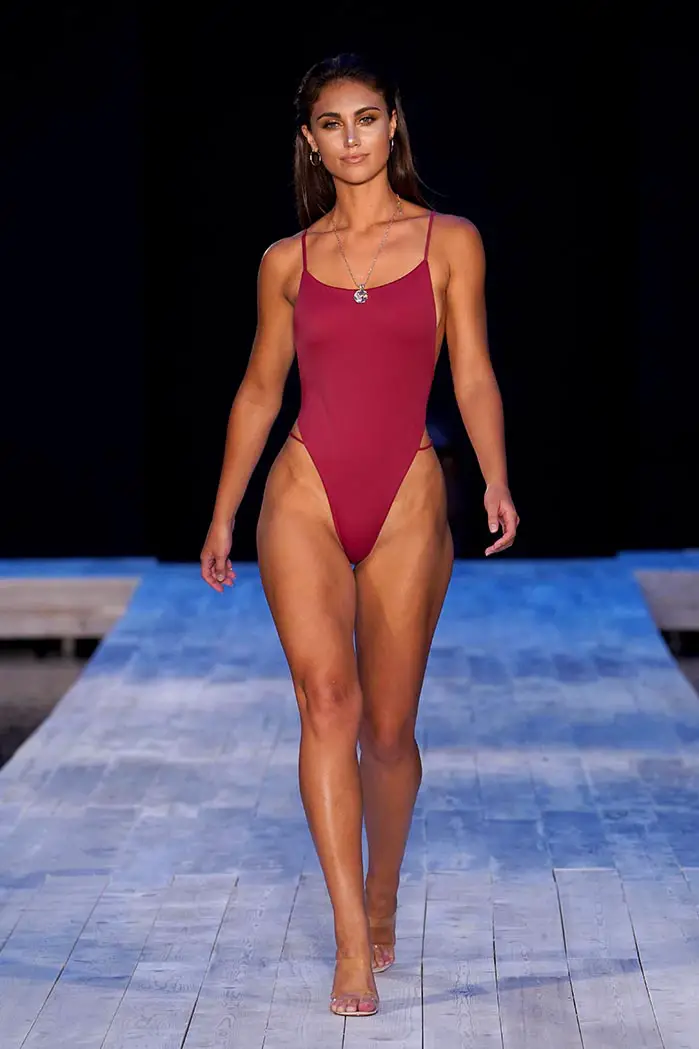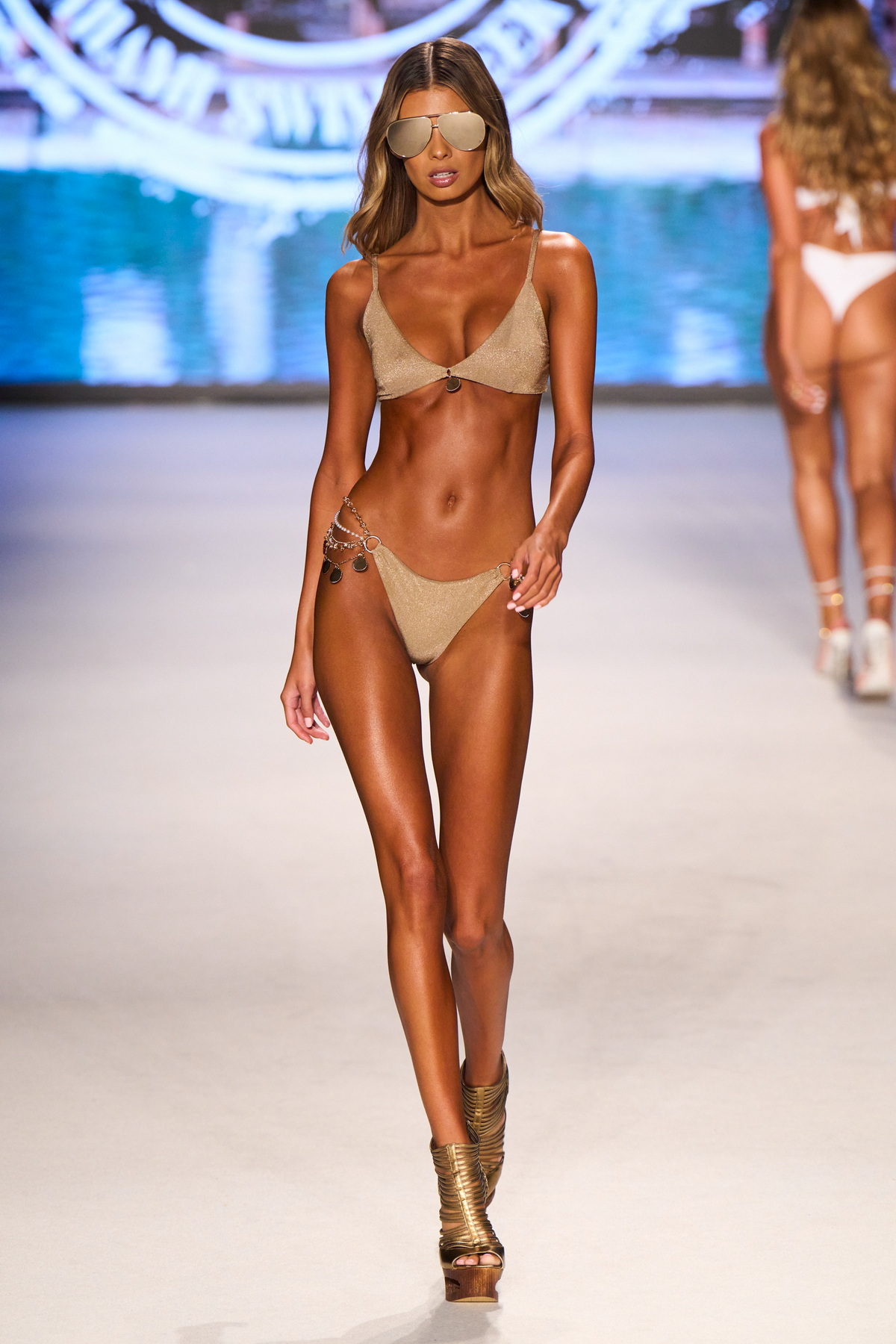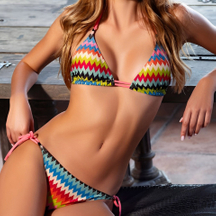Content Menu
● Understanding the Swimwear Modeling Industry
● How to Prepare Physically and Mentally
>> Physical Preparation
>> Mental Preparation
● Building a Swimwear Modeling Portfolio
● Finding the Right Agencies
>> 1. Research Agencies
>> 2. Submit Your Portfolio
>> 3. Attend Open Calls
● How to Model Swimwear: Posing, Expression, and Confidence
>> Posing Techniques
>> Tips for Success
● Swimwear Model Digitals: The Industry Standard
● Virtual Swimwear Modeling: 3D and Digital Solutions
>> 3D Swimwear Modeling Process
● How Brands and Manufacturers Use Swimwear Modeling
● Tips for Successful Swimwear Shoots
>> 1. Arrive Prepared
>> 2. Communicate with the Photographer
>> 3. Practice Posing
● Common Challenges in Swimwear Modeling
>> 1. Body Image Issues
>> 2. Competition
>> 3. Weather Conditions
● Conclusion
● Frequently Asked Questions About How to Model Swimwear
● Citations:
How to Model Swimwear: The Ultimate Guide for Brands, Models, and Creatives
Modeling swimwear is more than just striking a pose in a bikini—it's a blend of artistry, confidence, preparation, and technical know-how. Whether you're a brand owner seeking to showcase your latest collection, a model aiming to break into the swimwear industry, or a photographer looking to capture the perfect shot, understanding how to model swimwear is essential for success. This comprehensive guide will walk you through every step of the process, from preparation and posing to portfolio building, digital modeling, and industry insights. Along the way, you'll find expert tips, visual inspiration, and answers to the most common questions about how to model swimwear.

Understanding the Swimwear Modeling Industry
Swimwear modeling is a dynamic sector of the fashion industry that requires models to showcase swimwear designs on runways, in print campaigns, and across digital platforms. The industry has evolved to become more inclusive, celebrating a range of body types, skin tones, and personal styles[1][12]. Brands seek models who embody confidence and can authentically connect with their target audience, whether for high-fashion editorials or commercial catalogs.
Key Aspects:
- Swimwear models must be comfortable and confident in front of the camera, as the garments reveal more of the body than most other fashion categories.
- The industry values diversity, with both slender and curvier models finding opportunities in today's market[1][12].
- Swimwear modeling is integral to brand marketing, product launches, and e-commerce, making it a critical component for swimwear manufacturers and OEM suppliers.
How to Prepare Physically and Mentally
Physical Preparation
1. Fitness and Nutrition
- Maintain a balanced diet rich in protein and nutrients to support muscle tone and energy levels[12][14].
- Engage in regular exercise, focusing on cardio and strength training for a toned, healthy physique[1][14].
- Consistency is key—models must be ready for shoots year-round.
2. Skincare and Grooming
- Establish a skincare routine to ensure smooth, glowing skin, as swimwear shoots often involve close-ups[14].
- Hair removal (legs, underarms, bikini line) is usually expected, but always confirm with the brand or agency.
- Avoid fake tans unless specifically requested; natural skin tone is preferred for digitals and castings[10].
Mental Preparation
1. Confidence Building
- Practice positive self-talk and body positivity.
- Attend runway and posing workshops to build stage presence and adaptability[12].
2. Research and Inspiration
- Study recent swimwear campaigns, magazines, and runway shows to understand current trends and expectations[1].
- Observe how professional models pose, move, and express themselves in swimwear.

Building a Swimwear Modeling Portfolio
A strong portfolio is your calling card in the swimwear industry. It should showcase your versatility, physique, and ability to model swimwear confidently.
1. Essential Portfolio Shots
- Full-body shots in classic swimwear (black two-piece is industry standard for digitals)[10][12].
- Three-quarter and close-up shots to highlight facial features and expressions.
- Variety of poses: standing, sitting, walking, and action shots (e.g., jumping, running on the beach).
2. Professionalism
- Use natural lighting and simple backgrounds to keep the focus on you and the swimwear[1][10].
- Avoid heavy makeup, jewelry, or distracting props.
- Include both smiling and serious expressions to demonstrate range.
3. Digital Portfolio
- Build an online portfolio using platforms like Pixpa or your own website, showcasing high-resolution images and videos[12].
- Include a mix of swimwear, fitness, and lifestyle images to attract a broader range of clients.
Finding the Right Agencies
Partnering with a reputable modeling agency can significantly enhance your career. Here's how to find the right one:
1. Research Agencies
Look for agencies that specialize in swimwear or fashion modeling. Check their client list and the types of models they represent.
2. Submit Your Portfolio
Prepare a professional submission that includes:
- Cover Letter: Introduce yourself and express your interest in swimwear modeling.
- Portfolio: Include your best swimwear shots and digitals.
3. Attend Open Calls
Many agencies hold open casting calls. This is a great opportunity to meet agents and showcase your portfolio in person.

How to Model Swimwear: Posing, Expression, and Confidence
Posing Techniques
1. Classic Poses
- Front-facing, profile, and three-quarter angles to show the swimwear from all sides[10].
- Hands on hips, arms above the head, or walking to elongate the body and highlight design features.
2. Dynamic Movement
- Incorporate natural, fluid movements like walking, running, or playing with water to create energy and authenticity in photos[14].
- Practice transitions between poses to maintain flow during shoots.
3. Expression
- Use facial expressions to convey mood—relaxed, joyful, sultry, or playful—depending on the brand's vision.
- Eye contact with the camera can create a strong connection with the viewer.
Tips for Success
- Practice in front of a mirror or record yourself to refine your poses and expressions.
- Work with experienced photographers who understand how to model swimwear and can guide you through the shoot.
- Stay hydrated and take breaks as needed, especially during outdoor shoots.
Swimwear Model Digitals: The Industry Standard
Model digitals (also known as “polaroids”) are essential for agencies and brands to assess your suitability for swimwear modeling.
How to Create Swimwear Model Digitals:
- Wear a simple black two-piece swimsuit.
- Take photos in natural light with a plain background.
- Capture front, profile, and three-quarter full-body shots, as well as close-ups of your face[10][12].
- Avoid trendy or overly stylized swimwear; the goal is to showcase your natural look.
Portfolio Example:
> “Wearing a black two-piece swimsuit is the standard look for a swimsuit digital. Both fashion models and commercial models can use a swimsuit. I would encourage aspiring commercial models to smile and laugh in their swimsuit digitals. Fashion models can show a range of serious and smiles.”[10]
Virtual Swimwear Modeling: 3D and Digital Solutions
With advancements in technology, brands and designers are increasingly using 3D modeling to visualize and test swimwear designs before physical production[3][4][7][8].
3D Swimwear Modeling Process
1. Design and Visualization
- Use 3D software (such as CLO 3D) to create digital prototypes of swimwear designs[2][7].
- Adjust patterns, fabrics, and prints virtually, saving time and resources.
2. Fit and Function Testing
- Simulate how the swimwear fits and moves on a digital avatar.
- Make virtual adjustments to improve fit, comfort, and aesthetics before creating physical samples[4].
3. Benefits for Brands and Manufacturers
- Rapid prototyping and iteration.
- Cost-effective sampling and reduced material waste.
- Enhanced ability to present collections to clients and buyers online.
Video Tutorial Example:
- [How to Make A Bikini / Two-Piece Swimsuit From Scratch | CLO 3D Design Tutorial][2]
- [How to Create Swimwear in CLO 3D 7.0][7]

How Brands and Manufacturers Use Swimwear Modeling
For swimwear brands, wholesalers, and OEM manufacturers, effective swimwear modeling is crucial for product development, marketing, and sales.
1. Product Development
- Fit models test prototypes for comfort, durability, and style, providing feedback to refine designs[3][4].
- Both 3D modeling and physical sampling are used to ensure the final product meets quality standards.
2. Marketing and Sales
- Professional swimwear models are featured in lookbooks, catalogs, e-commerce sites, and runway shows[1][6][9][15].
- High-quality images and videos are used to attract buyers, retailers, and end consumers.
3. OEM Services
- As an OEM swimwear manufacturer, offering digital modeling and professional photoshoots can add value for overseas clients, helping them visualize and market their private label collections[3][4][21].
Tips for Successful Swimwear Shoots
When preparing for a swimwear shoot, consider the following tips to ensure success:
1. Arrive Prepared
- Wardrobe: Bring multiple swimwear options and accessories.
- Makeup and Hair: Have your hair and makeup done professionally or arrive with a polished look.
2. Communicate with the Photographer
Discuss the shoot's vision and any specific poses or styles you want to try. Good communication can lead to better results.
3. Practice Posing
Familiarize yourself with poses that work well in swimwear. Practice in front of a mirror to find your best angles.
Common Challenges in Swimwear Modeling
Swimwear modeling comes with its own set of challenges. Here are a few to be aware of:
1. Body Image Issues
The pressure to maintain a certain physique can lead to body image concerns. It's essential to focus on health rather than just appearance.
2. Competition
The swimwear modeling industry is competitive. Stay updated on trends and continuously improve your skills to stand out.
3. Weather Conditions
Outdoor shoots can be affected by weather. Be prepared for changes and have a backup plan in case of rain or extreme temperatures.
Conclusion
Modeling swimwear is a dynamic and fulfilling career that requires dedication, preparation, and a strong portfolio. By focusing on fitness, building a professional portfolio, and finding the right agency, you can successfully navigate the world of swimwear modeling. Remember to embrace your unique beauty and confidence, as these qualities will shine through in your work.
Frequently Asked Questions About How to Model Swimwear
1. What are the height and body requirements for swimwear modeling?
High-fashion swimwear models are typically at least 5'8" tall with a slender, toned physique. Commercial brands may accept models as short as 5'7" and with a variety of healthy body shapes[12][14].
2. How do I pose for swimwear photoshoots?
Use a mix of classic and dynamic poses: front-facing, profile, hands on hips, arms above the head, walking, and action shots. Practice transitions and facial expressions to convey confidence and energy[10][14].
3. What should I include in my swimwear modeling portfolio?
Include full-body, three-quarter, and close-up shots in simple swimwear. Use natural lighting and minimal makeup. Add variety with different poses, expressions, and settings[1][10][12].
4. How do brands use 3D modeling for swimwear?
Brands use 3D modeling to create digital prototypes, test fit and function, and visualize designs before physical production. This speeds up development and reduces costs[3][4][7][8].
5. What is the best way to get signed by a swimwear modeling agency?
Build a strong portfolio with professional digitals, research reputable agencies, and apply online or attend open calls. Be aware of industry standards and avoid scams[1][12].
Citations:
[1] https://www.backstage.com/magazine/article/how-to-become-a-swimsuit-model-guide-74914/
[2] https://www.youtube.com/watch?v=2hwJaVu9vZo
[3] https://www.ashleymcpherson.com/blog/the-complete-180-step-swimwear-manufacturing-process-from-a-global-sourcing-expert
[4] https://deepwear.info/blog/concept-to-production-holistic-guide-to-swimwear-manufacturing/
[5] https://unsplash.com/s/photos/swimsuit-model
[6] https://www.youtube.com/watch?v=oOWsIuk287g
[7] https://www.youtube.com/watch?v=VGlc28xvJPE
[8] https://www.meshy.ai/tags/bikini
[9] https://www.youtube.com/watch?v=ZvI9IRCEIJ4
[10] https://www.brandonandrephoto.com/blog/how-to-take-swimsuit-model-digitals
[11] https://www.gettyimages.com/photos/bathing-suit-models
[12] https://www.pixpa.com/blog/how-to-become-a-swimsuit-model
[13] https://www.gettyimages.com/photos/swimwear-model
[14] https://www.themodelskit.co.uk/blog/what-it-takes-to-become-a-bikini-model/
[15] https://swimsuit.si.com/galleries
[16] https://www.reddit.com/r/Modelling/comments/1cwqfdg/how_do_i_get_into_swimsuitlingerie_modeling_would/
[17] https://zodel.com/spotlight/path-to-becoming-a-bikini-model/
[18] https://kateheussler.com/blog/how-to-become-a-bikini-model/
[19] https://swimsuit.si.com/models
[20] https://stock.adobe.com/search?k=swimsuit+model
[21] work.fashion_manufacturing





































